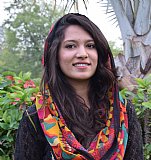Introduction
Urdu and Hindi are two languages that share a deep linguistic and cultural history, yet they are often seen as distinct languages due to sociopolitical factors. Let's take a look at the differences and similarities between Urdu and Hindi, exploring their linguistic origins, writing scripts, vocabulary, and the complex sociocultural context in which they exist.
Linguistic Origins
Urdu and Hindi share a common linguistic ancestor known as Hindustani, which emerged in the Indian subcontinent several centuries ago. Hindustani evolved from a blend of local Prakrits, Persian, Arabic, Turkish, and Sanskrit. Over time, it developed into two distinct registers: Urdu and Hindi.
Script:
- Urdu: Urdu uses the Perso-Arabic script, written from right to left. It includes additional letters to represent specific phonemes not found in the Arabic script.
- Hindi: Hindi uses the Devanagari script, which is written from left to right. Devanagari is a syllabic script that can represent the entire phonetic inventory of Hindi.
Vocabulary:
- Shared Vocabulary: Both Urdu and Hindi share a significant portion of their vocabulary. This shared vocabulary is primarily derived from Sanskrit, Persian, and Arabic, with a mix of loanwords from other languages.
- Differences: While the core vocabulary is similar, differences arise due to language contact and sociopolitical influences. Urdu tends to incorporate a higher percentage of Persian and Arabic loanwords, while Hindi relies more on Sanskrit-derived terms.
Grammar:
- Grammatical Structure: Urdu and Hindi have similar grammatical structures. They both use postpositions (case markers) instead of prepositions, and they exhibit noun-adjective agreement in terms of gender and number.
- Verb Conjugation: Both languages have complex verb conjugation systems with various tenses, moods, and aspects. Verbs are conjugated based on the person, number, and gender of the subject.
Phonetics and Phonology:
- Sounds: Both languages share a common phonemic inventory, including vowel and consonant sounds. They have a similar set of vowels and consonants, and they share the retroflex sounds (/ʈ/ and /ɖ/).
- Pronunciation Variations: Pronunciation variations exist in both languages due to regional accents and dialects. These variations can affect the way certain words are pronounced.
Practicing speaking Hindi through live conversations is an unparalleled approach to mastering the nuances of the language, particularly when it comes to achieving a natural accent and pronunciation. Engaging in real-time dialogue exposes learners to the rhythm and tonal variations inherent in spoken Hindi, a feature that textbooks or audio recordings alone cannot fully replicate. This method of language learning, often referred to as immersive learning, allows individuals to interact with native speakers, providing a dynamic and authentic linguistic experience. By actively participating in conversations, learners are not only able to mimic the natural flow of the language but also receive immediate feedback and correction, essential for refining pronunciation and accent. Moreover, this approach aligns well with the current trend in language acquisition, which emphasizes practical, real-world usage over theoretical knowledge.
Gender:
Gendered Nouns: Urdu and Hindi nouns are gendered, with two genders: masculine and feminine. The gender of a noun determines the forms of associated adjectives and verbs.
Formal and Informal Registers:
Register Differences: Urdu and Hindi exhibit differences in vocabulary and script when it comes to formal and informal registers. Urdu tends to use more formal Persian and Arabic vocabulary in formal settings, while Hindi may employ more colloquial terms.
Sociopolitical Context
The sociopolitical context plays a significant role in the differentiation of Urdu and Hindi. The division became more pronounced during the British colonial period when language policies were implemented to differentiate the two. After the partition of India and Pakistan in 1947, Urdu was declared the national language of Pakistan, while Hindi became one of the official languages of India. This further solidified their distinct identities.
Cultural Significance
Both Urdu and Hindi have rich literary and cultural traditions. Urdu is often associated with the classical poetry of Mirza Ghalib and Allama Iqbal, while Hindi boasts a diverse literary heritage, including works by Premchand and Kabir. These languages have also contributed to the film industries in their respective countries, with Bollywood in India and Lollywood in Pakistan.
Modern Use
In contemporary times, both Urdu and Hindi continue to coexist and influence each other. Many speakers of one language can understand and communicate in the other, especially in informal settings. Television, cinema, and the internet have facilitated cross-pollination of vocabulary and phrases.
Conclusion
Urdu and Hindi, while perceived as distinct languages due to sociopolitical factors, share a deep linguistic and cultural connection. They have a common linguistic origin, similar grammar and phonetics, and a significant overlap in vocabulary. The differences in script, vocabulary, and sociopolitical context are products of historical and geopolitical developments.
The relationship between Urdu and Hindi serves as a reminder of the intricate interplay between language, culture, and identity. While they may be officially distinct languages, they are, in many ways, two sides of the same linguistic coin, representing the rich and diverse heritage of the Indian subcontinent.















